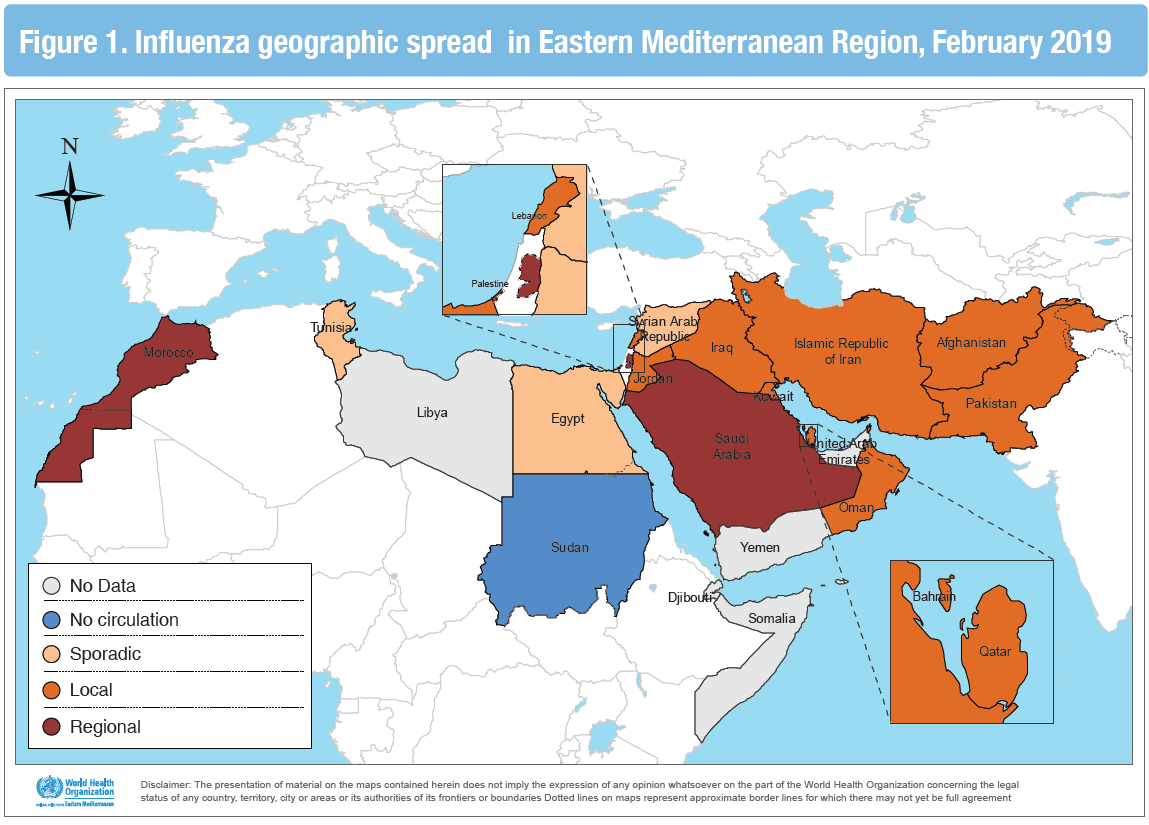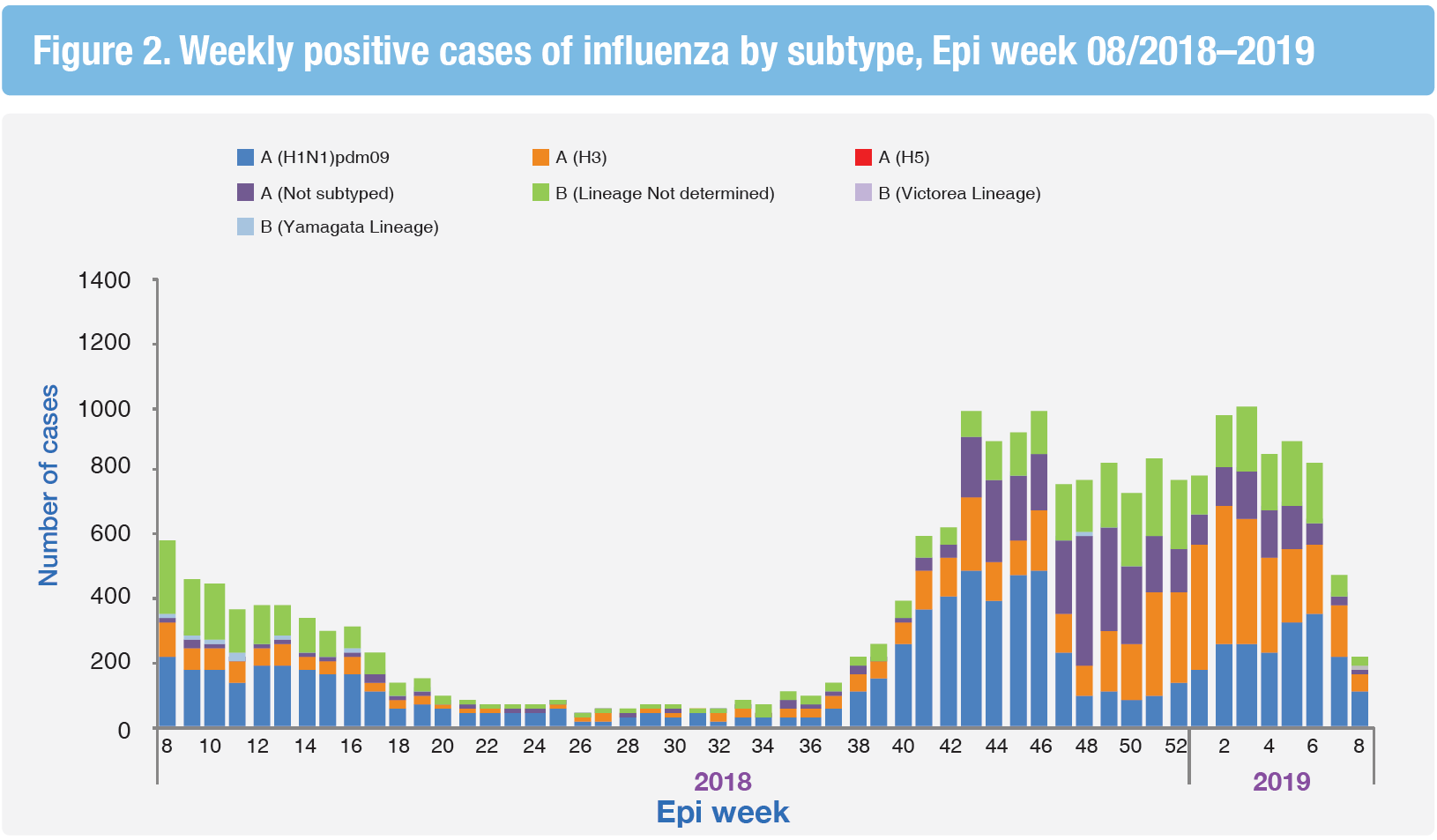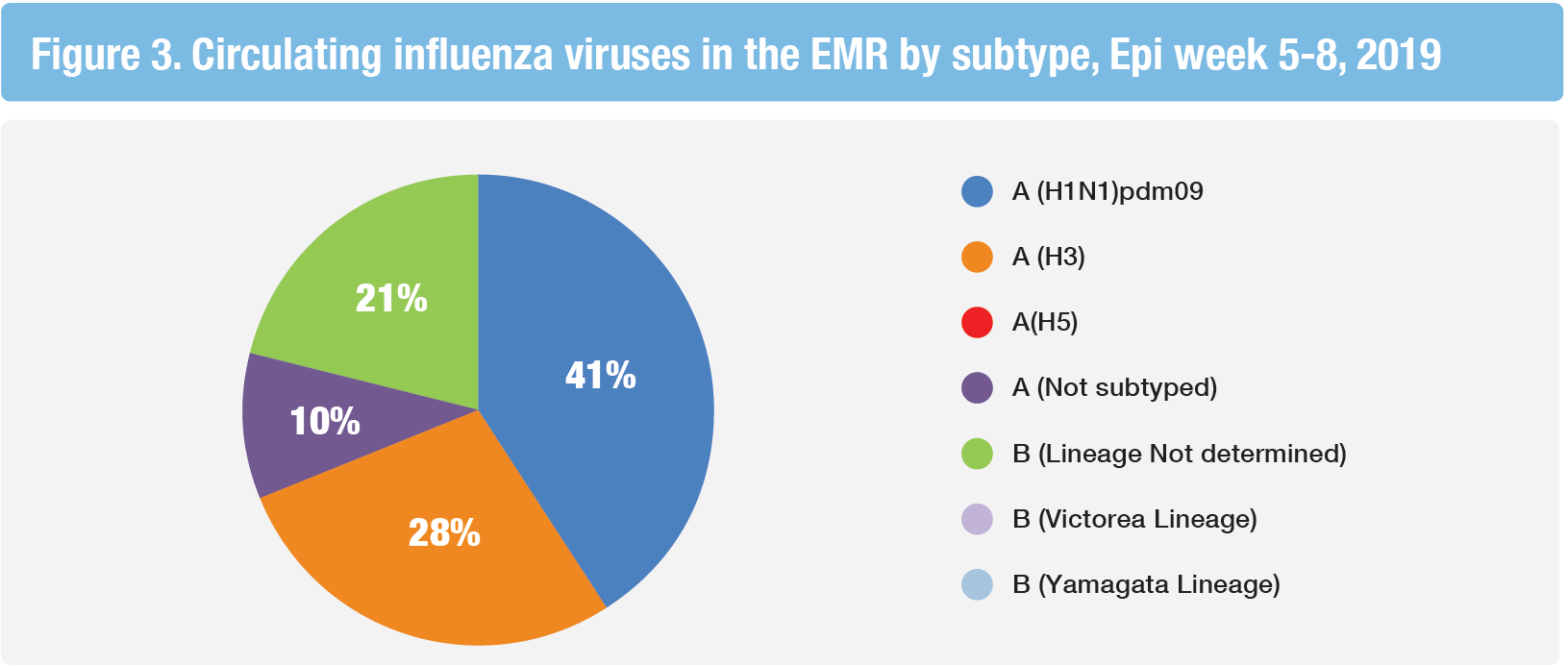In the WHO Eastern Mediterranean Region, the influenza activity started high in the first two weeks and then declined in the last two weeks of February in countries reporting data to FluNet and EMFLU namely; Afghanistan, Bahrain, Egypt, Iran (Islamic Republic of), Iraq, Jordan, Kuwait, Lebanon, Morocco, occupied Palestinian territory (oPt), Oman, Pakistan, Qatar, Saudi Arabia, Sudan, Syrian Arab Republic and Tunisia.

Influenza activity by sub-type
• In February 2019, no new cases of human influenza A(H5N1) were reported in Egypt.
• In the northern Africa influenza transmission zone, Morocco reported high activity with influenza A(H1N1)pdm09 virus as the dominant subtype, followed by influenza A(H3N2) and very few B viruses. While in Egypt and Tunisia influenza A(H3N2) viruses predominated.
• In the western Asia influenza transmission zone, Bahrain, Oman, Saudi Arabia and Kuwait reported co-circulation of influenza types A and B while Qatar is reporting high activity with B viruses predominated. Jordan, Iraq, Lebanon, oPt and Syrian Arab Republic reported co circulation of A(H1N1)pdm09 and A(H3N2) and few B viruses.
• In southern Asia transmission zone, Iran (Islamic Republic of) continued reporting circulation of all seasonal influenza viruses with A(H3N2) predominated, while Pakistan reported and Afghanistan reported co circulation of influenza types A and B viruses.
Source of transmission zones: http://www.who.int/csr/disease/swineflu/transmission_zones/en/
• Figure 2 shows the weekly distribution of influenza subtypes.

Circulating influenza viruses by subtype
• During February 2019, national influenza centres and influenza laboratories in the Region tested a total of 9874 specimens for influenza viruses of which 2416 tested positive (24%).
• The average percentage of positivity rates is 24%, with highest positivity rate recorded in Morocco, Saudi Arabia and Lebanon.
• Of the viruses tested; 1914 (79%) were influenza A viruses, including 999 (41%) influenza A(H1N1)pdm09 virus and 684 (28%) were influenza A(H3) virus. Influenza B (Lineage Not determined) virus accounted for 502 (21%) (Figure 3).




